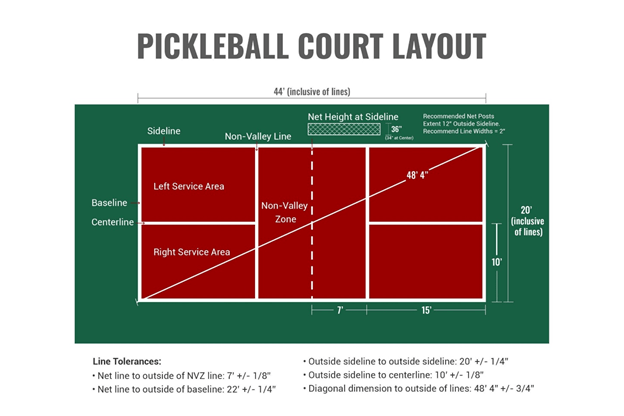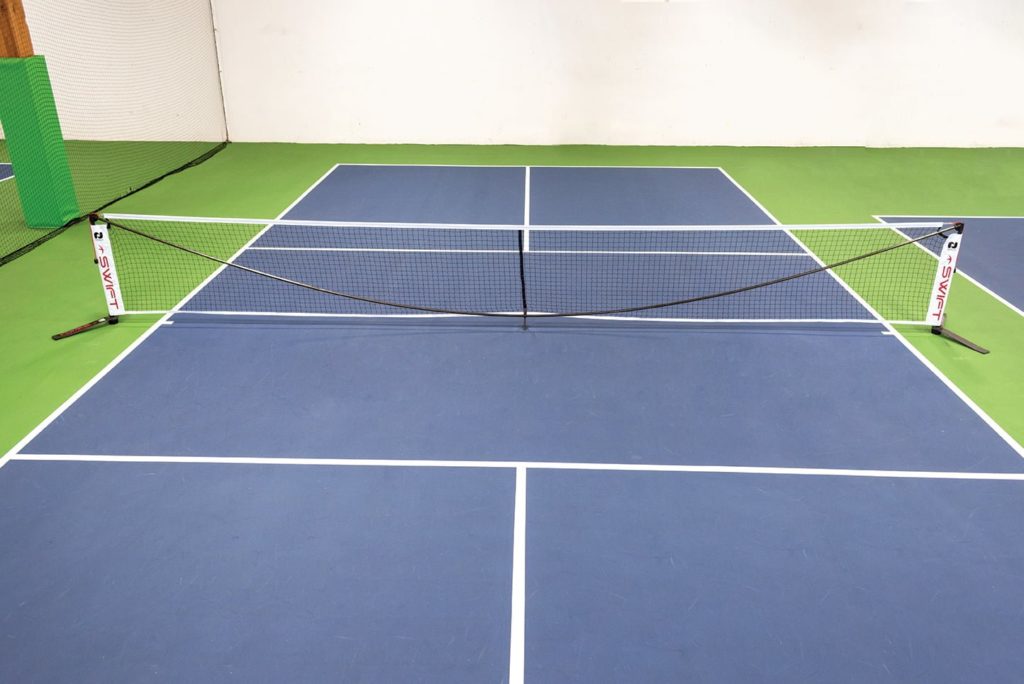Lasting Practices in Pickleball Court Building You Must Know
As the appeal of pickleball continues to rise, so too does the need for sustainable practices in court building and construction. This approach not just addresses environmental issues but also enhances the longevity and performance of the courts. From choosing environmentally friendly materials to carrying out efficient drainage and energy-saving illumination options, there are various techniques to consider. Yet, the effect of these practices expands far past the court itself. Recognizing just how each aspect adds to an extra lasting future invites even more exploration right into the complex balance between entertainment growth and ecological stewardship.
Choosing Eco-Friendly Products
Selecting environment-friendly materials is an essential step in the building of lasting pickleball courts. The option of sustainable materials not only lessens ecological impact but additionally enhances the long life and performance of the court. Key products consist of reused rubber for the surface area, which provides superb toughness and shock absorption while diverting waste from landfills.
Furthermore, using locally sourced materials minimizes transport exhausts and sustains regional economic climates. Pickleball court construction. Making use of indigenous hardwoods for fencing and seats can give a lasting aesthetic while guaranteeing strength against the components.
Including absorptive materials for court foundations can even more add to sustainability by permitting for natural water drain and minimizing runoff. These selections not only protect neighborhood communities but also advertise healthier play environments.
Reliable Drain Solutions
While the option of green materials is essential, carrying out effective drainage services is just as essential for maintaining lasting pickleball courts. Proper drain not just safeguards the court surface from water damages but likewise lessens disintegration and overflow, advertising environmental honesty.
Reliable drain systems can consist of absorptive paving, which allows water to infiltrate the ground instead of pooling externally. This reduces the possibility of standing water, which can bring about mold and various other maintenance issues. Furthermore, integrating purposefully positioned water drainage channels and swales can direct excess water far from the court area, guaranteeing a dry playing surface and protecting against dirt erosion.
Utilizing native plant life in the landscape design around the courts can even more enhance water drainage by absorbing excess water and reducing drainage. These plants require much less irrigation and advertise biodiversity, lining up with lasting methods.
Furthermore, it is crucial to routinely keep the drain system to guarantee its long-lasting performance. This includes cleaning particles and tracking for clogs. By prioritizing effective water drainage services, pickleball court producers can dramatically contribute to the sustainability and durability of the facility, inevitably profiting both players and the setting.
Energy-Efficient Lighting Options
As the demand for pickleball proceeds to expand, incorporating energy-efficient lighting options right into court design has come to be increasingly vital for sustainability. Traditional lighting systems often take in too much power, contributing to higher functional prices and environmental effect. Consequently, adopting modern, energy-efficient innovations is crucial for both new buildings and renovations.
LED (Light Emitting Diode) lighting attracts attention as a leading option because of its long life and power financial savings (Pickleball court construction). Contrasted to conventional lighting, LEDs utilize around 75% less energy and can last as much as 25 times much longer, considerably minimizing maintenance expenses. The directional nature of LED illumination reduces light pollution, guaranteeing that lighting is focused on the court rather than bordering areas.

Lasting Surface Alternatives
Exploring lasting surface alternatives for pickleball courts has actually acquired grip amongst players and builders alike. The focus on eco-friendly products not only lines up with the expanding environmental understanding but additionally boosts the performance and longevity of the courts.
One prominent choice is the usage of recycled rubber, which can be sourced from utilized tires. This product gives excellent shock absorption, reducing the danger of injuries for gamers while promoting sustainability. Additionally, modular ceramic tiles made from recycled plastics supply another feasible alternative. These floor tiles are very easy to change and install, and their flexibility enables various court setups.
All-natural grass courts are likewise arising as a sustainable option, advertising biodiversity and decreasing the warm island result. They require routine maintenance and water, which might not straighten with all sustainability goals.

Water Conservation Strategies

One more reliable strategy includes the setup of rain harvesting systems. These systems keep and collect rainwater for usage in preserving court surfaces and landscaping. This method not just saves potable water yet likewise find here decreases dependence on metropolitan sources.
In addition, utilizing drought-resistant landscaping around the courts is important. Indigenous plants need much less water and are better adapted to neighborhood climate problems, hence decreasing general water intake. Furthermore, making use of efficient irrigation systems, such as drip watering, ensures that water is provided straight to plant origins, decreasing evaporation and waste.
Final Thought
Incorporating lasting techniques in pickleball court construction dramatically contributes to environmental preservation and source performance. By prioritizing these practices, the building of pickleball courts can straighten with broader environmental goals while promoting durability and capability within communities.
As the popularity of pickleball continues to increase, so as well does the requirement for lasting practices in court building.Picking green products is a critical step in the building of sustainable pickleball courts. By prioritizing energy-efficient a fantastic read illumination choices, pickleball court erectors can add to an extra sustainable future while satisfying the requirements of gamers and stakeholders alike.Incorporating lasting surface area options not only boosts the efficiency of pickleball courts however also leads the means for implementing reliable water preservation methods.Incorporating sustainable techniques in pickleball court building considerably contributes to environmental conservation and resource performance.